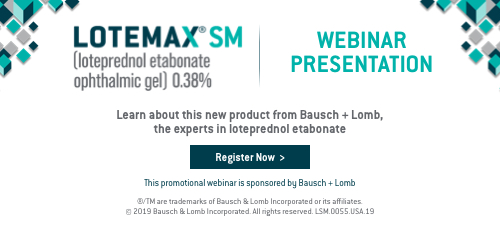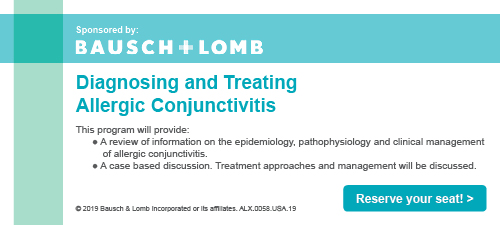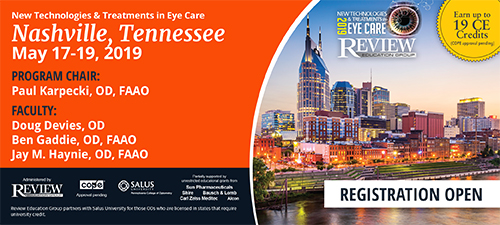
A
weekly e-journal by Art Epstein, OD, FAAO
Off the Cuff: The Value of Caring
Several years ago, shortly before I moved to Arizona, I was attending staff in the Department of Ophthalmology of the University Hospital near my office. I was supervising a Monday afternoon clinic when two of the residents asked if I wanted to take a look at a patient who had come in as an emergency the previous Friday evening. They quickly reviewed the case. Middle-aged female, contact lens wearer, with a corneal ulcer in her right eye. It’s not just me. Over the years I’ve come to realize that ODs and MDs are very different animals. Perhaps it's a natural people-centric temperament that draws us to optometry or the differences between optometry and medical school, but I've found we ODs are just more connected to our patients. Maybe if I was putting a patient’s smashed face back together, the trauma and gore would have forced me to build walls, but what makes me happy is enjoying the hug I got the other day from a relieved patient and having people tell me that I've changed their lives for the better. I think that taking my failures personally and pitting myself against nature's occasional cruelty defines who I am. Many colleagues have shared pretty much the same sentiments; and in that sense, not building walls makes us better doctors.
|
|||||
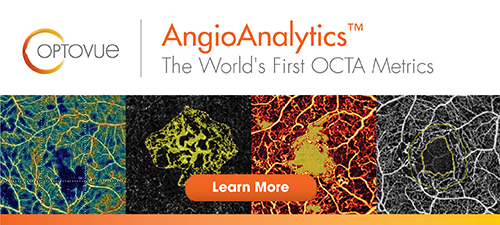 |
||
| Factors That Influence the Success of Contact Lens Fitting in Presbyopes: a Multicentric Survey | ||||
A multicenter survey was conducted using a questionnaire, in eight contact lens (CL) centers among two groups of presbyopes: successful wearers (SWs), who were presbyopic and wearing CLs successfully; and unsuccessful wearers (UWs), who tried unsuccessfully to wear CLs to manage their presbyopia and had stopped wearing CLs to evaluate the key factors behind successful and unsuccessful wear of CLs for patients with presbyopia.
A total of 237 completed questionnaires were returned; 178 from SWs and 59 from UWs. Successful wearers used CLs 5.8 ±1.5 days a week, and additional reading spectacles were never used by half of the SWs. Among SWs, the most important reason to continue wearing CLs was convenience (61%), whereas among UWs, the most important reason to discontinue wearing CLs was poor vision (80%). A logistic regression analysis showed that the absence of astigmatism, a higher subjective satisfaction, a better subjective perceived vision at distance and a lower subjective loss of visual contrast were able to predict the success of CL use for presbyopia. This study explored the predictors for determining successful or unsuccessful CL wear in presbyopes. Researchers wrote that, among ophthalmic, demographic, lifestyle and subjective variables, the latter seemed to be of greater importance in determining the success of CL wear. Therefore, they added, it is necessary that subjective variables are taken into account by the CL practitioner when approaching presbyopic CL fitting in practice. |
||||
SOURCE: Zeri F, Di Censi M, Livi S, et al. Factors That influence the success of contact lens fitting in presbyopes: a multicentric survey. Eye Contact Lens. 2019; Apr 15. [Epub ahead of print]. |
||||
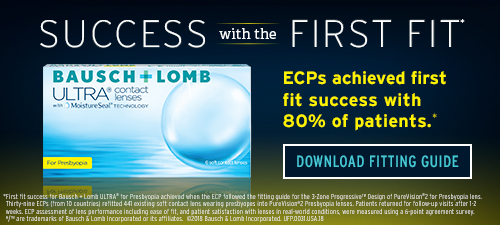 |
||
| Association Between Glaucoma and the Risk of Alzheimer's Disease: a Systematic Review of Observational Studies | ||||
Investigators systematically conducted this meta-analysis based on observational studies published up to Jan. 15 2018, identified from PubMed and Web of Science to address inconsistency as well as investigate the relationship between glaucoma and the risk of Alzheimer's disease (AD). Two team members independently extracted the data and assessed the quality of each included study. Summary relative risk (RR) and 95% confidence intervals (CIs) were calculated using a random-effects model. Eight observational studies with 6,870 AD cases were included.
The majority of these studies (n=6) were graded as low risk according to the Newcastle-Ottawa Quality Assessment Scale. Individuals diagnosed with glaucoma, compared with those who were not, had an increased risk of AD (RR=1.52; CI: 1.41 to 1.63; I2=97%). A significant finding was also observed for primary open-angle glaucoma (RR=1.52; CI: 1.41 to 1.63; I2 =97%). However, when stratified by study design, only the case-control studies (RR=1.08; CI: 0.89 to 1.31; I2=37.3%) yielded significant results, while the cohort studies did not (RR=1.08; CI: 0.89 to 1.31; I2=97.7%). Of note, our meta-regression analysis suggested that study design might be a source of heterogeneity. Additionally, a significantly positive association was observed when the analyses were restricted to Asia (RR=2.03; CI: 1.02 to 4.07). There was no significant publication bias in these analyses. Investigators wrote that recent evidence suggests that glaucoma may increase the risk of AD. They concluded that additional cohort studies would be needed to confirm these findings and to have improved knowledge on the true nature of this association. |
||||
SOURCE: Xu XH, Zou JY, Geng W, et al. Association between glaucoma and the risk of Alzheimer's disease: A systematic review of observational studies. Acta Ophthalmol. 2019; Apr 23. [Epub ahead of print]. |
||||
 |
||
| Relative Contributions of Intracranial Pressure and Intraocular Pressure on Lamina Cribrosa Behavior | ||||
An axially symmetric finite element model of the posterior eye was constructed with an elongated optic nerve and retro-orbital subarachnoid space ensheathed by pia and dura mater to characterize the relative contributions of intraocular pressure (IOP) and intracranial pressure (ICP) on lamina cribrosa (LC) behavior, specifically LC depth (LCD) and LC peak strain. The mechanical environment in LC was evaluated with ICP ranging from 5mm Hg to 15mm Hg and IOP from 10mm Hg to 45mmHg. LCD and LC peak strains at various ICP and IOP levels were estimated using full factorial experiments. Multiple linear regression analyses were then applied to estimate LCD and LC peak strain using ICP and IOP as independent variables. Both increased ICP and decreased IOP led to a smaller LCD and LC peak strain. The regression correlation coefficient for LCD was -1.047 for ICP and 1.049 for IOP, and the ratio of the two regression coefficients was -1. The regression correlation coefficient for LC peak strain was -0.025 for ICP and 0.106 for IOP, and the ratio of the two regression coefficients was -0.24. A stiffer sclera increased LCD but decreased LC peak strain; besides, it increased the relative contribution of ICP on the LCD but decreased that on the LC peak strain. ICP and IOP have opposing effects on LCD and LC peak strain. While their effects on LCD are equivalent, the effect of IOP on LC peak strain is three times larger than that of ICP. The influences of these pressure are dependent on sclera material properties, which might explain the pathogenesis of ocular hypertension and normal-tension glaucoma. |
||||
SOURCE: Tong J, Ghate D, Kedar S, et al. Relative contributions of intracranial pressure and intraocular pressure on lamina cribrosa behavior. J Ophthalmol. 2019;2019:3064949. |
||||
| News & Notes | ||||||||
| B+L to Initiate Technolas Teneo Excimer Laser Trials, Announces New Divisional Leadership Bausch + Lomb will initiate a series of U.S. clinical trials to evaluate the safety and efficacy of Technolas Teneo excimer laser for vision correction surgery for myopia and myopic astigmatism. The company expects the clinical trials to begin by July 2019. The system being studied will be the same as the Technolas Teneo laser (model 2) being sold outside the United States. Bausch + Lomb plans to file for FDA premarket approval of the Technolas Teneo laser at the conclusion of the clinical trials. Read more. In addition, the company announced the appointment of new leadership in its Pharmaceuticals and Consumer Health Care divisions in the United States. Yolande Barnard, formerly the vice president, marketing and sales, U.S. Neurology, Bausch Health, will serve as vice president and general manager, U.S. Pharmaceuticals, Bausch + Lomb. Chris Marschall, most recently vice president, marketing for Bausch + Lomb’s U.S. Consumer Health Care business, was promoted to vice president and general manager, U.S. Consumer Health Care. Read more. |
||||||||
| Avedro to Present Research on Proprietary Corneal Cross-Linking at ARVO Avedro announced that three abstracts highlighting proprietary cross-linking technologies being developed by Avedro were accepted for poster presentations at the upcoming 2019 Association for Research in Vision and Ophthalmology Meeting being held April 28-May 2 in Vancouver, BC. The scientific poster presentations are scheduled as follows on April 28: • 8am-9am: Biomechanical Impact of Drug Formulation, Supplemental Oxygen, and UV Delivery on Epi-On CXL. Adler DC, Hill J, Liu C, Deardorff P, Raizman M, Rajpal R. Poster #317-B0509. • 8am-9:45am: Stromal Oxygen Dynamics During High-Irradiance Epi-On Corneal Crosslinking. Hill J, Liu C, Deardorff P, Thompson V, Gore D, Adler DC. Poster #325-B0517. • 8am-9:45am: Impact of Eye Motion and Active vs. Passive Eye Tracking on Refractive Crosslinking. Usher D, Mukherjee A, Smirnov M, Hill J, Eddington W, Liu C, Adler DC. Poster #327-B0519. Read more.
|
||||||||
| Allegro Expands Portfolio with Candidate ALG-1007 for DED Treatment, World-renown Clinicians Join Cornea Scientific Advisory Board Allegro Ophthalmics expanded the company's anti-integrin portfolio with drug candidate ALG-1007. ALG-1007 is a topical treatment in development for potential use in patients with dry eye disease. Pre-clinical and clinical findings of risuteganib convinced Allegro that it could develop a new anti-integrin compound to treat DED. In addition, Allegro also announced that world-renowned clinicians Richard L. Lindstrom, MD; Edward J. Holland, MD; and Eric D. Donnenfeld, MD, joined the company's newly formed Cornea Scientific Advisory Board (Cornea SAB) to provide strategy and direction on Allegro's clinical development pipeline in the areas of corneal disease and dry eye. Dr. Lindstrom will serve as chairperson. Read more. |
||||||||
|
||||||||
|
||||||||
|
Optometric Physician™ (OP) newsletter is owned and published by Dr. Arthur Epstein. It is distributed by the Review Group, a Division of Jobson Medical Information LLC (JMI), 11 Campus Boulevard, Newtown Square, PA 19073. HOW TO ADVERTISE |


